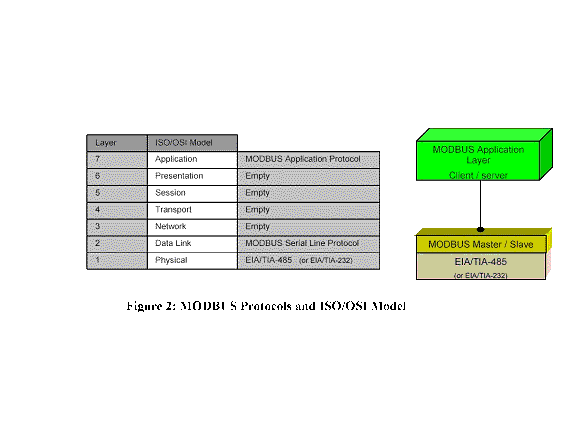MODBUS Serial Line protocol is a Master-Slave protocol. This protocol takes place at level 2 of the OSI model.
Standard Modbus ports on Modicon controllers use an RS–232C compatible serial interface that defines connector pinouts, cabling, signal levels, transmission baud rates, and parity checking. Controllers can be networked directly or via modems.
The following figure gives a general representation of MODBUS serial communication stack compared to the 7 layers of the OSI model.
Modbus OSI Model

In addition to their standard Modbus capabilities, some Modicon controller models can communicate over Modbus Plus using built–in ports or network adapters, and over MAP, using network adapters. On these networks, the controllers communicate using a peer–to–peer technique, in which any controller can initiate transactions with the other controllers. Thus a controller may operate either as a slave or as a master in separate transactions.
The Two Serial Transmission Modes ( RTU / ASCII )
Controllers can be setup to communicate on standard Modbus networks using either of two transmission modes: ASCII or RTU. Users select the desired mode, along with the serial port communication parameters (baud rate, parity mode, etc), during configuration of each controller. The mode and serial parameters must be the same for all devices on a Modbus network .
The selection of ASCII or RTU mode pertains only to standard Modbus networks. It defines the bit contents of message fields transmitted serially on those networks. It determines how information will be packed into the message fields and decoded.
On other networks like MAP and Modbus Plus, Modbus messages are placed into frames that are not related to serial tranasmission. For example, a request to read holding registers can be handled between two controllers on Modbus Plus without regard to the current setup of either controller’s serial Modbus port.